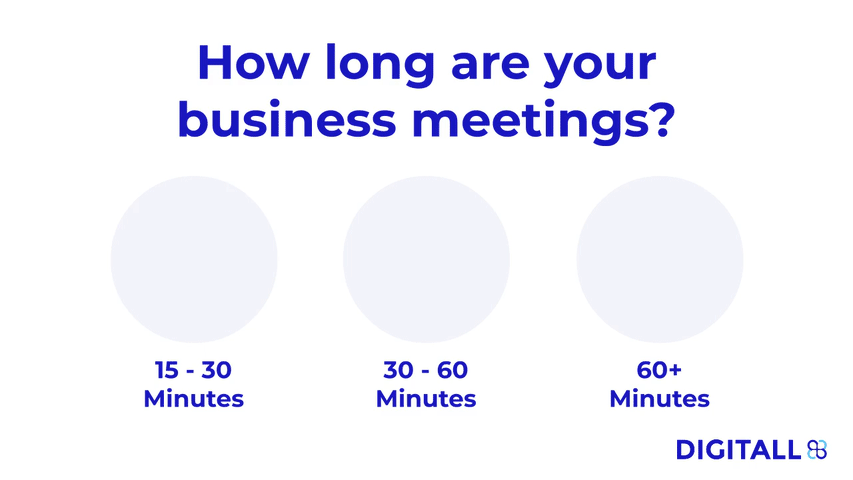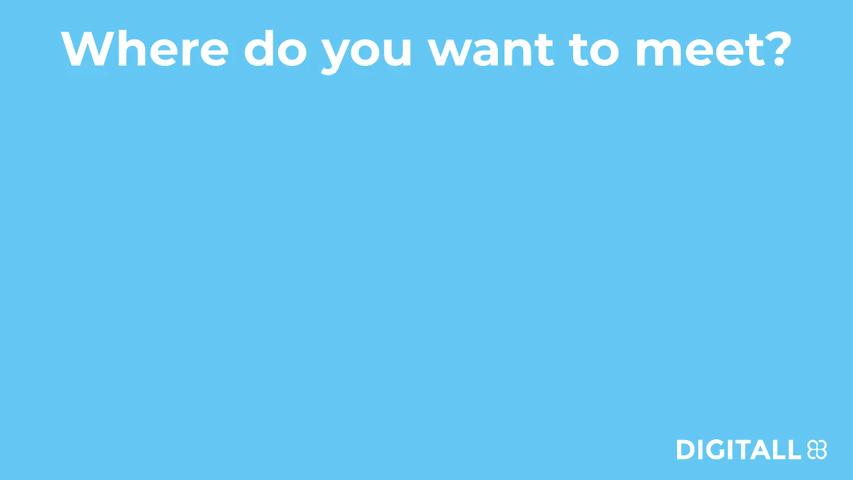2 min read
Why Customer Experience Is Becoming the Ultimate Competitive Edge
Products can be replaced, prices can be compared, but experiences last. In the chapter “Customer...
By Juliane Waack on 06.07.2022

5 min read
In the last couple of months, we have asked our social media followers about their daily organization, meeting culture and digital tools. Here's, what they had to say about business meetings.
Content
Whether online or in person, business meetings are a big part of the daily life in the office, especially in organizational and/or management positions. According to our survey results, nearly two out of three people have business meetings from 30 - 60 minutes on average. Nearly one third seems to be highly efficient with an average of 15 - 30 minutes and an unlucky 7% spend more than one hour on average in each business meeting.

Of course, there are occasions, were a long meeting is necessary. Kick-offs for complex projects or even workshops sometimes need the time to align and work through steps and tasks. However, it's been proven again and again that many meetings are too long because they lack moderation, include too many stakeholders, and are not focused on a clear goal.
In their article "The Psychology behind meeting overload", Ashley Whillans, Dave Feldman and Damian Wisniewski write about a survey in which managers reported that 83% of all their meetings were unproductive.
Some of the main reasons why unproductive meetings take place were:
Often, people take part in meetings because they think they might miss crucial information (or might be judged for not attending). Likewise, organizers act on FOMO by inviting more people than necessary "just in case".
According to the authors, leaders often prioritize their own needs over others and will set up meetings when it's opportune for them without considering their team's / participant's calendars and work loads. However, this also can cost the company, when an organizer's urgency is costing others time to work on other urgent topics.
Oftentimes, organizers use meetings to make sure that everyone is doing their tasks and committing to deadlines. While keeping up with deadlines is important, it's questionable whether meetings are necessary to do this. An open chat, a planer or a document to keep up with everyone's task might be much easier and more flexible for everyone.
Lack of documentation and next best actions can lead to a meeting culture were meetings often spent a lot of time reiterating what has been said in the previous meeting because no one knows what was actually discussed. Summaries as well as a short debrief after a meeting help to keep everyone informed (even those who did not participate in the meeting) and be clear on next steps.
Find out more about trends, market research, leadership topics, and best practices for the digital transformation. Subscribe to the Galaxy blog.
In the age of digital platforms, remote work, and global collaboration, the classic in-person meeting is still popular but far from being the only choice. We asked our community how they like to meet and it's obvious from their answers that neither digital nor in-person meetings are the single solution. 58% like to mix between personal and digital meetings.
However, in comparison, digital meetings are not nearly as popular as in-person meetings, with 13% prefering the virtual environment, wheras 23% like to shake hands. 7% are not convinced that meetings are even necessary and would rather write an email.

Talking to my colleagues who often work in projects with customers as well as speaking from my own experience, digital meetings have the advantage of being more flexible, less cost- and resource-intensive (no one needs to travel), and it is easier to connect with stakeholders who otherwise might not have been able to take part.
However, even during mostly digital projects, my colleagues agreed that occasional in-person meetings are incredibly helpful to kickstart a project, align, and get a feel for everyone. Especially when it comes to working groups who might not yet know each other, e.g., in new customer projects or collaborations with other business units, a personal meeting has the oftentimes invisible advantage of getting to know people. To see how someone talks and acts can help much more to put their written communication in context which in turn can reduce conflict due to misunderstandings.
Additionally, in-person meetings are great for workshops and trainings, since different learning and working methods fit to different learning and working styles. Not everyone learns by listening or writing. It's no coincidence, that many creative and innovative workshop methods still involve paper, pens, sometimes even toys, or role playing. To see, for example, a customer's journey in colorful post-its on a whiteboard, can help make certain concepts clearer.
However, technology has advanced majorly in the last couple of yours. What used to be a simple video meeting with screen sharing, now has the option to include surveys, reaction options, virtual whiteboards and more. Although meeting platforms might not be able to 100% replace an in-person team event, they are very capable of optimizing work and even pitch meetings, offering new innovative ways for multi-media content and participation.
Virtual meeting room, collaboration tool, and app hub - a modern digital workspace combines everything your employees need to succeed. Find out more.
Juliane Waack is Editor in Chief at DIGITALL and writes about the digital transformation, megatrends and why a healthy culture is essential for a successful business.
by Sabine Kirchem
Products can be replaced, prices can be compared, but experiences last. In the chapter “Customer...
by Sabine Kirchem
Customer Relationship Management (CRM) is no longer just a technical discipline but revolves around...
by Sabine Kirchem
There's loads of data out there – but are we truly utilizing it? And more importantly, are we using...